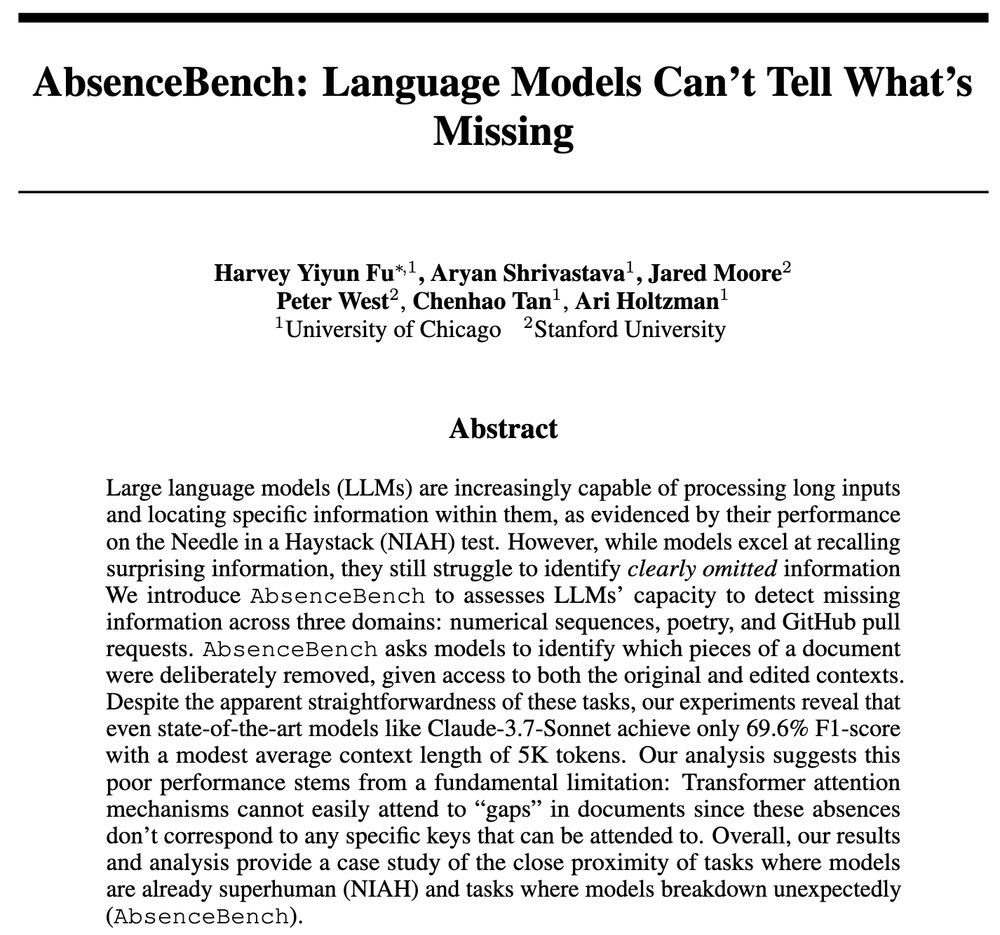🫥AbsenceBench🫥 shows that even SoTA LLMs struggle on this task, suggesting that LLMs have trouble perceiving “negative spaces”.
Paper: arxiv.org/abs/2506.11440
🧵[1/n]

🫥AbsenceBench🫥 shows that even SoTA LLMs struggle on this task, suggesting that LLMs have trouble perceiving “negative spaces”.
Paper: arxiv.org/abs/2506.11440
🧵[1/n]

